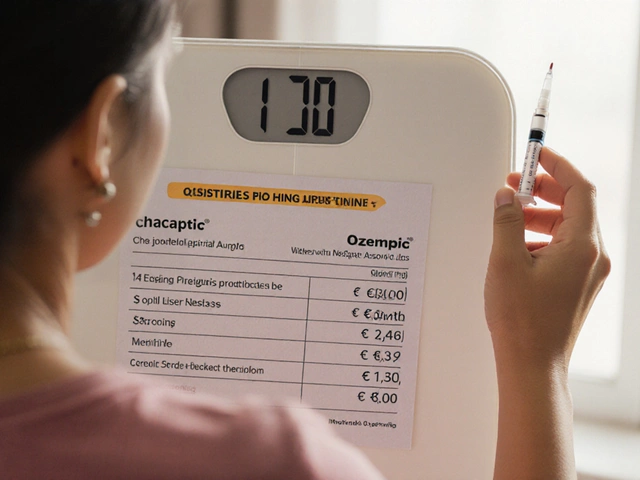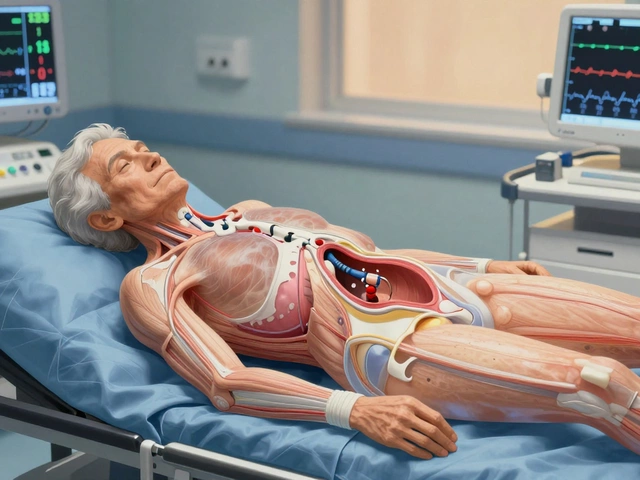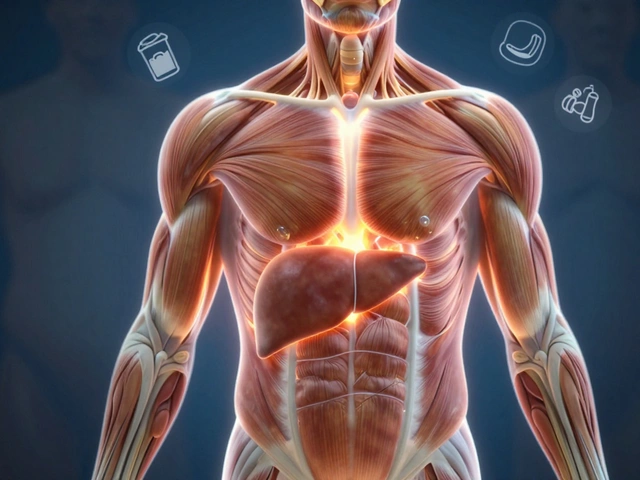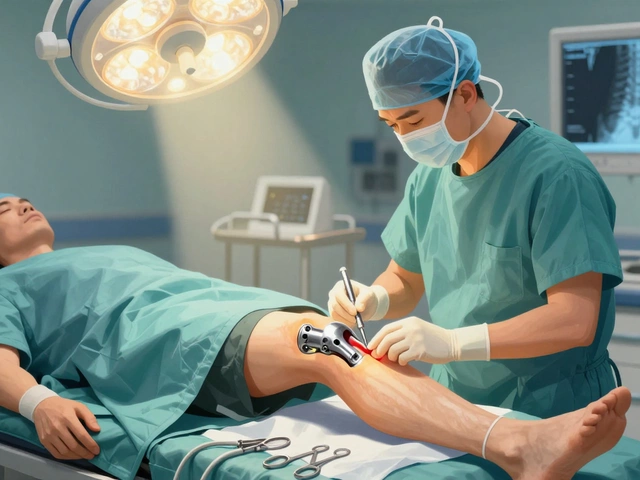Post-Heart Surgery Symptom Checker
Symptom Assessment
Select any symptoms you're experiencing after your heart surgery. This tool helps you determine if your symptoms are normal recovery or require medical attention.
After a heart operation, most patients expect a straightforward road to feeling better. In reality, the body and mind can throw off some odd reactions that feel puzzling or even frightening. Knowing what’s normal, what’s a warning sign, and how to handle each quirk can make the recovery journey far less stressful.
What "strange" can look like after heart surgery
Here are the most frequently reported oddities, grouped by how they show up:
- Sudden changes in mood or confusion - you might feel unusually irritable, tearful, or have short‑term memory lapses.
- Unexplained fatigue or low energy - a tiredness that doesn’t improve with rest.
- Irregular heartbeats (arrhythmias) - fluttering or racing sensations in the chest.
- Chest discomfort that isn’t pain - a sense of pressure, tightness, or mild burning.
- Difficulty sleeping - waking up several times, vivid dreams, or feeling like you can’t fall asleep at all.
- Swelling in the legs or abdomen - puffiness that appears days after the operation.
- Digestive quirks - nausea, loss of appetite, or occasional constipation.
- Wound sensations - itching, tingling, or a feeling of “something moving” near the sternum.
These behaviors don’t happen to every patient, but they’re common enough that surgeons and nurses talk about them during discharge planning.
Why the body reacts this way
Understanding the why helps demystify the experience.
Heart surgery is a major invasive procedure that temporarily disrupts normal circulation, triggers inflammation, and requires powerful anesthesia sets off a cascade of physiological changes. Below are the key mechanisms behind each odd behavior.
- Post‑operative delirium - The brain reacts to anesthesia, pain medications, and the stress of surgery. In older adults, even a brief dip in oxygen levels can cause temporary confusion. This is often called postoperative delirium a reversible state of altered cognition that usually resolves within a week.
- Inflammatory response - The body releases cytokines to heal the incision. Those same chemicals can make you feel sluggish, cause low‑grade fever, or give you a “flu‑like” malaise.
- Arrhythmias - Surgical manipulation of the heart and the scar tissue that forms can irritate electrical pathways, leading to irregular beats. The most common is atrial fibrillation, which may appear a few days after the operation.
- Fluid shifts - During surgery, fluids are given intravenously. When the kidneys start working again, excess fluid can collect in the legs (peripheral edema) or in the abdomen (ascites).
- Medication side effects - Blood thinners, beta‑blockers, and painkillers each have their own side‑effect profile, including dizziness, nausea, or sleep disturbances.
- Psychological stress - Knowing you’ve had a life‑saving operation can trigger anxiety, which often shows up as restlessness or mood swings.
- Wound healing - As the sternum fuses, nerves regenerate, causing tingling or itching. This sensation is normal but can be alarming if you’re not expecting it.
Red‑flag symptoms that need immediate attention
Not every odd behavior is benign. Keep an eye out for these warning signs:
- Chest pain that radiates to the arm, jaw, or back, especially if it’s crushing or comes with sweating.
- Sudden shortness of breath, especially if it worsens when lying flat.
- Rapid heart rate (>120 bpm) accompanied by dizziness, fainting, or feeling “floppy.”
- High fever (>38.5°C/101.3°F) that persists beyond 48hours post‑surgery.
- Severe swelling or redness around the incision, any discharge that looks pus‑filled.
- New confusion, hallucinations, or inability to stay awake for more than a few minutes.
If any of these surface, call your cardiac team or go to the nearest emergency department right away.
Managing the oddities: practical tips
Most of the strange behaviors are self‑limiting, but they become easier to handle with a few strategies.
- Stay hydrated, but watch fluid intake - Aim for 1.5‑2L per day unless your doctor says otherwise. Too much fluid can worsen swelling.
- Follow medication schedules precisely - Set alarms or use a pill box. Missing a dose of a blood thinner can raise clot risk, while extra doses can cause bleeding.
- Prioritize gentle movement - Light walking improves circulation, reduces fluid buildup, and lowers the chance of atrial fibrillation. Start with 5‑10minutes a day and increase gradually.
- Practice sleep hygiene - Keep the bedroom cool, limit caffeine after noon, and use a soft night‑light if you’re scared of the dark.
- Mind‑body techniques - Deep breathing, guided meditation, or short mindfulness sessions can calm the nervous system and reduce mood swings.
- Nutrition matters - Small, frequent meals rich in protein, whole grains, and fruits help wound healing and keep energy levels stable.
- Wound care - Keep the incision dry, change dressings as instructed, and gently pat the skin dry after showering to avoid irritation.
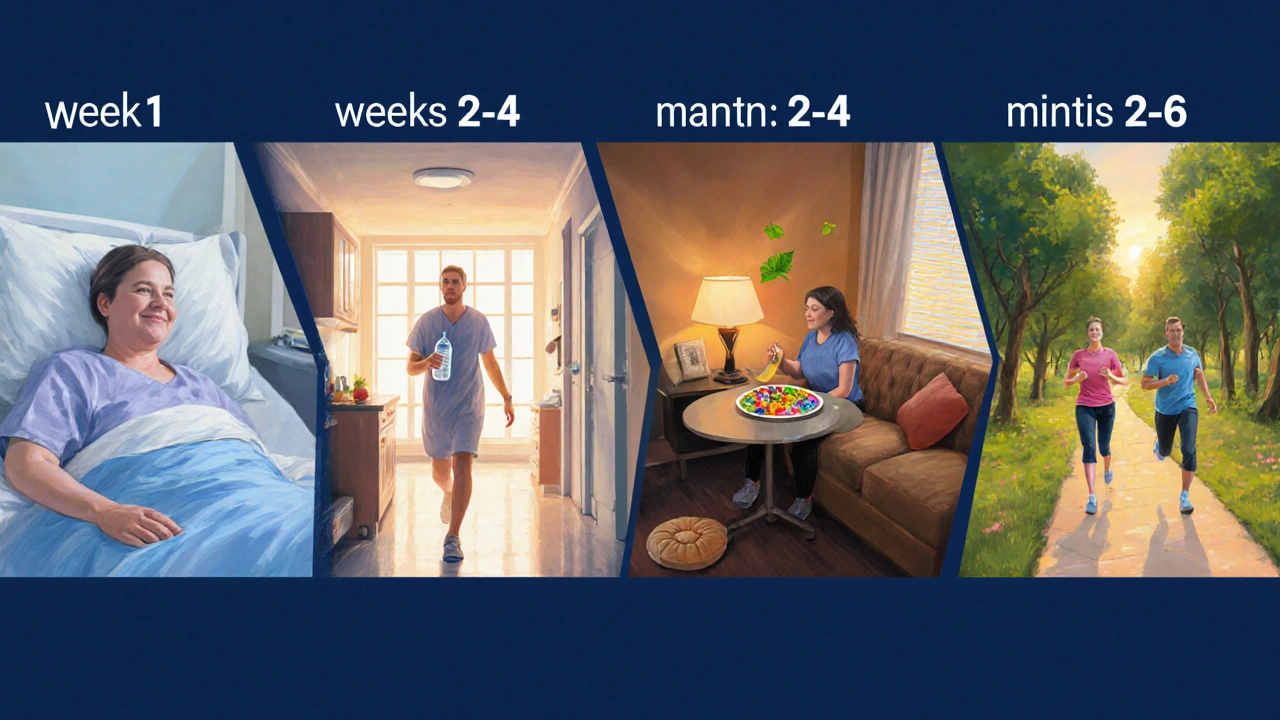
When will the strange behaviors fade?
Recovery timelines vary, but a typical pattern looks like this:
- First week - Most patients feel sore, tired, and may experience mild confusion or sleep disruption.
- Weeks 2‑4 - Energy improves, arrhythmias resolve in many cases, and swelling begins to subside.
- Month 2‑3 - Steroid‑type inflammation fades, wound itching lessens, and regular sleep patterns return.
- Month 4‑6 - Full cardiac rehabilitation program should be finished; most patients report normal mood and cognition.
Always compare your progress with the milestones your surgeon gave you. If a symptom lingers beyond the expected window, bring it up during follow‑up visits.
Quick reference: symptom severity table
| Behavior | Typical Cause | Usual Severity | When to Call Doctor |
|---|---|---|---|
| Sleep disruption | Medication, hospital environment | Low | If persists >2weeks |
| Fatigue | Inflammation, reduced activity | Low‑Medium | If you can’t get out of bed |
| Arrhythmia (AFib) | Irritated heart tissue | Medium‑High | Rapid heart rate >120 bpm or dizziness |
| Chest discomfort (non‑pain) | Muscle soreness, scar healing | Low‑Medium | If pressure feels crushing or spreads |
| Post‑operative delirium | Anesthesia, low oxygen | High | Any sudden confusion or hallucination |
| Wound redness/discharge | Infection | High | Immediately |
Frequently Asked Questions
Why do I feel confused after heart surgery?
Confusion, or postoperative delirium, is often triggered by anesthesia, pain meds, and brief drops in oxygen. It’s common in patients over 65 but usually clears within a few days. Keep the room quiet, stay hydrated, and let your team know if it worsens.
Is it normal to have a racing heart after the operation?
A fast heartbeat often means atrial fibrillation, which occurs in 20‑30% of patients after coronary bypass or valve surgery. Doctors usually give a beta‑blocker or blood thinner to control it. If you feel palpitations, call your clinic; most cases settle within weeks.
What can I do about the itching around my sternum?
Itching signals nerve regrowth as the bone heals. Gently moisturize the skin, avoid scratching, and use a cool compress. If redness or swelling appears, it could be an infection and needs a doctor’s look.
How long should I wait before starting a cardiac rehab program?
Most surgeons clear patients for graduated cardiac rehabilitation between 2‑4weeks after an uncomplicated surgery. Early light walking can start sooner, but structured exercise classes wait until the incision is sturdy enough.
When is swelling after surgery considered dangerous?
Mild swelling in the ankles is typical as fluid shifts. However, sudden, painful swelling in one leg, especially with redness or warmth, may signal a deep‑vein thrombosis. Call your doctor immediately.

